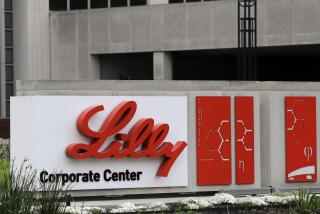Sugar Price Controls Sharply Criticized : Regulation: A federal program protects U.S. growers and processors, but it also adds at least $1.4 billion to the yearly cost of food, a GAO report says.
- Share via
WASHINGTON — A federal price guarantee program for U.S. sugar growers and processors adds at least $1.4 billion to the yearly cost of food while benefiting just a few producers, a report said on Monday.
The program, which guarantees a minimum price that is typically double the world price for sugar, indirectly boosts the price of corn-based sweeteners as well, the General Accounting Office said.
“It’s becoming a program to benefit fewer and fewer people who will make more and more money,” said Rep. Charles E. Schumer (D-N.Y.), who requested the study.
Rather than paying direct subsidies to growers, the Agriculture Department guarantees a minimum price by controlling imports. The real price usually exceeds the minimum price.
To make its report, GAO estimated a world price of 20.5 cents a pound for sugar, which is the price it would be without any subsidies.
It devised that benchmark to give a picture of what prices would be without the distortions created by other countries’ sugar programs.
It then took a three-year average of U.S. price for sugar and corn sweeteners, which worked out to be about 5 cents-a-pound higher.
“The program protects domestic sugar producers from lower world prices but has increased domestic sugar prices, thereby costing sweetener users an average of $1.4 billion annually,” the report said.
Sugar comes from an estimated 1,705 sugar cane farms in Florida, Hawaii, Louisiana and Texas, and from 13,731 sugar beet farms in 14 states. California, Idaho, Michigan and Minnesota rank as the top sugar beet producers. Forty-two cane mills and 36 beet processing plants convert the crops into sugar.
*
However, about 150 farms, or 1% of all domestic sugar farms, received nearly 42% of the entire benefit to sugar growers.
One farm received more than $30 million in estimated benefits. The 33 largest farms, all in Florida and Hawaii, received more than $1 million each in program benefits, the report said.
Four makers of high-fructose corn sweeteners shared nearly $480 million in indirect benefits from the program, the report said.
Robert H. Buker Jr., senior vice president of U.S. Sugar Corp. in Clewiston, Fla., said Florida growers favor ending the program. “But we must have an end to the European subsidies that have driven the world market for more than a decade,” he said.
He said about three-quarters of the sugar consumed in the United States goes into processed foods but accounts for a fraction of the price.
“What we’re really seeing here is pressure coming from a congressional district that represents large industrial users,” he said.
He noted that his company is employee owned, so that the program benefits go to 2,800 people.
More to Read
Inside the business of entertainment
The Wide Shot brings you news, analysis and insights on everything from streaming wars to production — and what it all means for the future.
You may occasionally receive promotional content from the Los Angeles Times.









